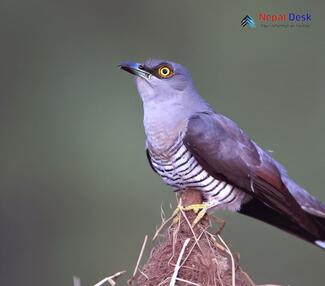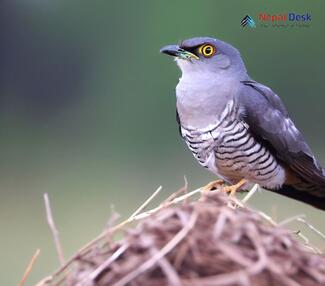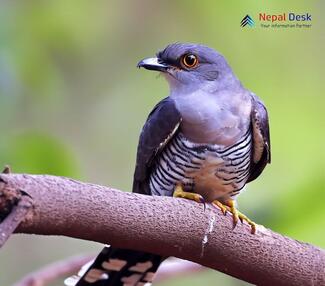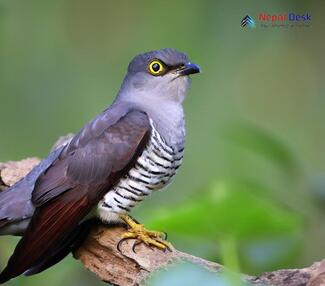The Indian Cuckoo (Cuculus micropterus) is a captivating and enigmatic bird species that can be found throughout Asia, including the mesmerizing landscapes of Nepal. Its distinctive call, which sounds like "one more bottle," has earned it a special place in Nepalese culture and among bird lovers. In this article, we'll delve into the fascinating aspects of this elusive bird, shedding light on its intriguing presence in Nepal.
A Closer Look at the Characteristics
Measuring approximately 33 centimeters (13 inches) in length, the medium-sized Indian Cuckoo sports a greyish-brown plumage with white markings underneath its wings – which are relatively short compared to other cuckoos. Their mesmerizing red eyes only add to their mysterious allure.
One of the most enthralling aspects of the Indian Cuckoo is its unique call. From April to July during the breeding season, male birds create an enchanting four-note call that can be heard resonating throughout their habitat, including woodlands, forests, and gardens. This enchanting song not only attracts potential mates but also contributes to the bird's mystique.
Exploring the Indian Cuckoo's Presence in Nepal
Boasting a diverse range of flora and fauna, Nepal is a haven for birdwatchers and wildlife enthusiasts. The country houses over 850 recorded bird species – some endemic and globally threatened – residing within its borders.
Within Nepal's tropical and subtropical moist forests (both broad-leaved and mixed-coniferous), you can find the Indian Cuckoo thriving alongside exotic birds such as the Great Pied Hornbill, Kalij Pheasant, and Himalayan Monal. They've been sighted in Chitwan National Park, Shivapuri Nagarjun National Park, Annapurna Conservation Area, and Bardia National Park, among other locations.
Facing Challenges and Fostering Conservation
Like many cuckoos, the Indian Cuckoo is a brood parasite, laying its eggs in the nests of other birds like drongos or bulbuls. The unsuspecting host then raises the Indian Cuckoo's offspring, inadvertently perpetuating the cuckoo's unique nesting strategy. Although fascinating, this behavior could potentially pose risks for both host and cuckoo populations.
Listed as "Least Concern" on the IUCN Red List, the Indian Cuckoo, with its elusive demeanor and widespread range, does not appear to be facing any imminent threats. However, habitat loss due to deforestation and agricultural expansion is a significant concern for these enigmatic creatures. Nepal has made strides in protecting natural habitats and bird diversity through protected areas, ecotourism promotion, and educational outreach programs aimed at raising conservation awareness.
In Conclusion
The Indian Cuckoo (Cuculus micropterus) continues to pique curiosity within Nepal's abundant avian community, enchanting bird lovers with its hypnotizing call and captivating appearance. As we work together to preserve these incredible birds and their habitats, we'll help ensure future generations can experience the magical charm of the Indian Cuckoo firsthand. So keep your ears tuned on your next Nepalese trek – you might just be lucky enough to hear their bewitching call reverberating through lush forests.




